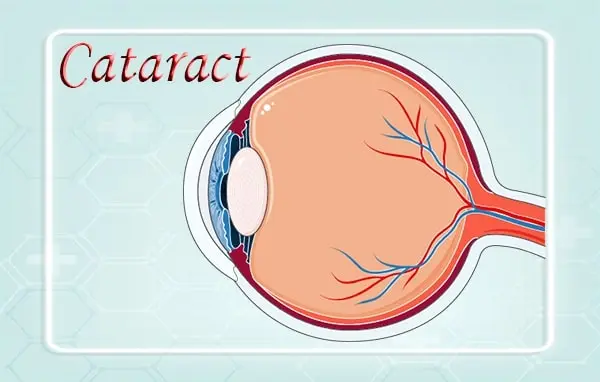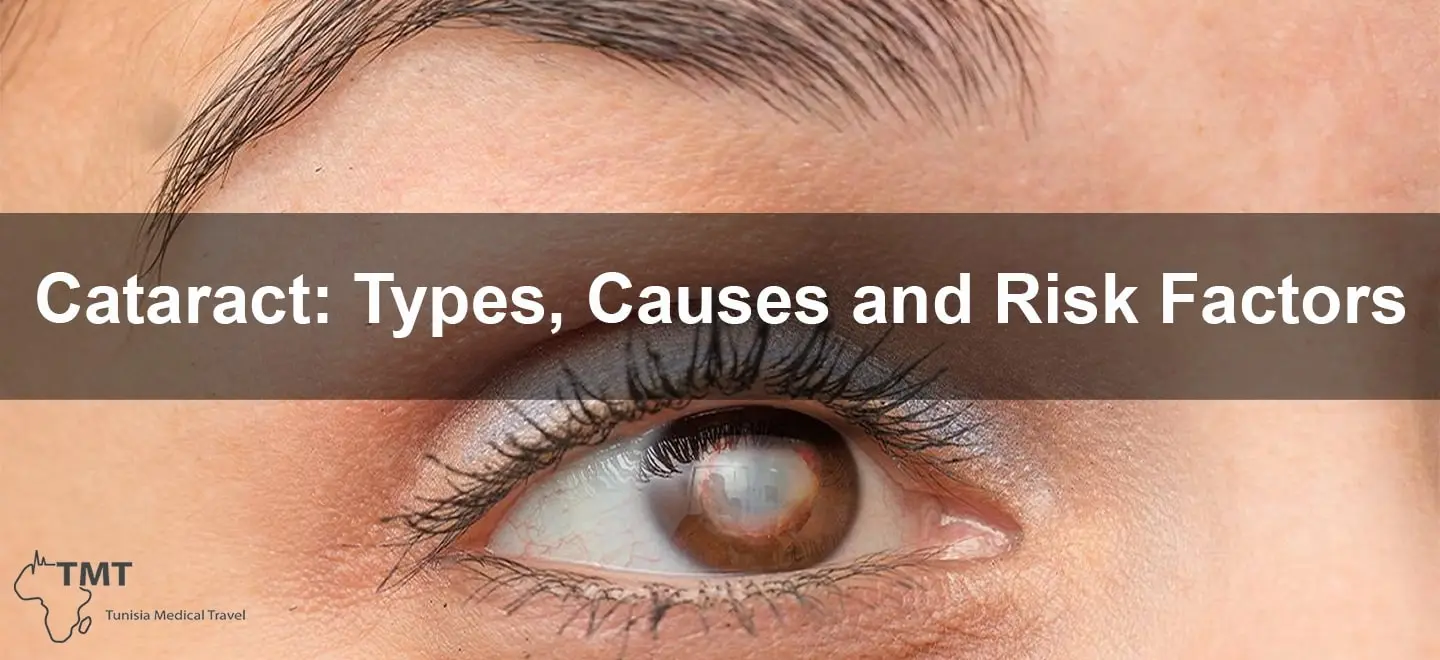Cataract: Types, Causes and Risk Factors
Cataract: Types, Causes and Risk Factors
What Is a Cataract?
A cataract is a clouding of the lens in the eye which affects vision. Most cataracts are related to aging. Each year more than 3 million Americans, cataract sufferers have their lenses replaced through the surgical procedure. A cataract can occur in either or both eyes and cannot spread from one eye to the other. Eye injury, certain diseases, or even some medications can cause the clouding but in many cases it is due to old age. The lens, where cataracts form, is positioned behind the colored part of the eye. The lens helps to focus light, so that your vision is clear. The lens is made of mostly water and protein arranged in a specific way to keep the lens clear. But as we age, some of the protein may clump together and start to cloud a small area of the lens. This is a cataract. Over time, the cataract may grow larger and cloud more of the lens, making it harder to see. Researchers suspect that there are several causes of cataract, such as smoking and diabetes. Or, it may be that the protein in the lens just changes from the wear and tear it takes over the years. However, cataracts have been shown to be associated with prolonged exposure to ultraviolet light, either from sunlight or from UV light. Women are more likely to get cataracts than men and African Americans develop cataracts more frequently than Caucasians. By the age of 80, more than half of all Americans either have a cataract or have had cataract surgery. When a cataract begins to form and it starts to affect an individual’s daily life, they can have a surgeon take out the cloudy lens and replace it with a clear, plastic lens. This operation is very safe and is the most effective procedure to help people to see more clearly.
Symptoms of cataracts
The most common symptoms of cataracts include cloudy or blurry vision that gets worse over time, double vision in one eye, problems with glare such as when you are driving at night, changes in how you see color especially a yellowish brown color to everything, and in rare cases, temporary improvements in how you see when you’re first developing a cataract. If you find yourself experiencing any of these symptoms, see your eye doctor as it is a very uncomfortable ailment in its later stages. « My vision seemed perfectly clear, and then I noticed that things were becoming cloudier and cloudier as the months went on. I also started to see halos around the lights at night, and that was especially true when I was driving, » explained one sufferer. These symptoms are what a cataract does naturally to your vision and are what lead to the problems at night. However, as these symptoms gradually get worse, the cataract starts to interfere more and more with the view. So that cataracts can cause vision problems or more specifically, those symptoms – they’re one and the same being identified by different terminology. Visual acuity is a parameter that is used to describe how good your sight is in numerical terms. The « standard » for good vision is 6/6, however it may not be the best way of describing how much a particular eye condition hampers someone’s lifestyle. For example, cataracts usually only seriously affect your vision when the blurring reaches the stage when the standard has fallen to 6/18 or more.
Causes of cataracts
Cataracts are caused by clumping of the protein that makes the lens. This prevents the correct passage of light. Although experts are uncertain of the exact reason why the protein begins to clump, there are some potential elements that may increase the risk of cataracts or progress it. These consist of heavy metal toxicity from a food source, hormonal imbalance in the body, either natural, due to aging, or caused by medications, UV rays in strong sunlight, the processes at the cellular level that are part of the regression of the eye’s capability to create a clear lens, and developing diabetes. Unlike some conditions and diseases, studies have not shown that the foods and diet can cause or automatically treat cataracts. However, healthy eating is always great for eyes and taking particular food, such as those rich in antioxidants, vitamins and minerals might postpone their beginning or progress. People suffering from heavy metal poisoning may be at a higher risk of suffering from cataracts or developing them in the future. However, more research is needed when it comes to the risk that heavy metals in the food increase the danger of cataracts. For those patients who are diabetic, a lot of self-management of the condition is the most useful pathway affecting the eyes. However, research done in the previous number of years has actually determined that medicating the swelling on the eye may assist. Likewise, a natural procedure of hormone imbalance not just comes with age, however can be brought on by specific medications too. It is the case that the lenticular tissues present in the lens of the eye has hormone receptor, and a change in hormones can quickly cause a change in vision. For example, the lens may end up becoming covered with the hormone-induced cataract described as a ‘swelling cataract’.
Types of cataracts
The different types of cataracts include: Age-related cataracts, which is the most common type. This starts with a gradual clouding of the lens that can thicken and yellow over time. If a cataract is still early and does not interfere with your life very much or at all, it may not need treatment. However, as your sight is affected more and more, the only way to get it back is to remove the cataract usually with a straightforward operation. Congenital cataracts. Babies are sometimes born with cataracts and they’re particularly likely to occur in babies who get an infection inside their eyes before they are born or whose mum has had a serious infection during the pregnancy such as rubella. They can also be inherited from the family and may develop at any age. Traumatic cataracts. Cataracts can develop after an injury to the eye, it may take months or even years after the injury for the cataract to develop. This type of cataract can occur at any age. Secondary cataracts. This type of cataract can develop after surgery for other eye problems, such as glaucoma. Also, cataracts are more likely to occur in people who have diabetes. This is because changes in blood sugar levels can cause the lens to swell, and over time this can lead to cataracts. When people need to continue to manage their diabetes to reduce this risk.

Risk factors associated with cataracts
The chance of developing cataracts increases as a result of certain risk factors. Many of these are also known to be associated with aging and the damage to tissues that results. For example, if you have certain medical conditions, such as diabetes, the excess blood sugar that these can lead to can damage the protein within the lens. In turn, this may enhance the development of cataracts. Other conditions, such as glaucoma, or having had an eye injury or a major operation on your eye, can also increase the risk of cataracts. Studies have also suggested that smoking can increase the risk of cataracts, especially in the case of nuclear cataracts which affect the center of the lens. High exposure to ultraviolet light risk factor has been identified as a cause of the development of cataracts. UVB radiation in low doses can also cause damage, although cataract formation is more typically associated with UVA radiation instead. However, the Health and Safety Executive advises that overexposure to UV radiation is eye health habits such as regularly using sunglasses which protect against UVA, and wearing safety glasses in environments such as building sites. Finally, research has suggested that not getting enough antioxidant vitamins, such as A, C and E, could lead to an increased cataract risk. Antioxidants help to stop the harmful chemical reactions in the eye that oxygen can cause; these reactions are especially relevant when tissues are damaged or begin to break down. So not having enough antioxidants in the diet to help maintain eye health may also help to increase the risk of cataract development.
Diagnosing cataracts
The eye specialist can diagnose cataracts during a watch over and once you discuss any vision issues you’ll be having. They will be able to do several tests, including: checking how well you can see through the central then corner of your vision, using a lot of totally different checks throughout the read, and employing a magnifier to envision at the rear of the attention. Diagnosing a cataract is straightforward, however it’s necessary to own regular follow-up appointments together with your specialist once symptoms begin to develop. This is often so the progress of the cataracts is closely monitored and also the right recommendation may be given on once surgery is also applicable. As presently because the optician confirms you have got a cataract, they must refer you to a attention specialist for an assessment. This is often so the specialist will verify however the cataracts are poignant your sight and what the acceptable course of action would be to for good correct your vision.
Treating cataracts
Nowadays, cataracts are usually removed and replaced with an artificial lens. Surgery is the only way cataracts can be treated, but it’s successful in improving vision in the vast majority of people who have it. Over 300,000 people have cataract operations each year, and nine out of ten people can see well again afterwards. It’s the most common operation performed in the UK. In the early stages, stronger glasses and brighter reading lights may help improve the vision. However, surgery is the only way cataracts can be treated, but it’s successful in improving vision in the vast majority of people who have it. Visual result of cataract surgery is good and most patients are able to return to their everyday activities after a couple of days. Many people feel that their independence is improved and the need for reading glasses is reduced after cataract surgery. Cataract surgery is one of the safest and most effective types of surgery in the UK. More than 95% of people who have cataract surgery have a better outcome. The surgery involves removing the cloudy lens and replacing it with a clear plastic lens. Before the operation, eye drops are used to enlarge the pupil. This allows the surgeon to gain access to the cataract, which is usually removed by a process called phacoemulsification. It’s done using a high frequency ultrasound probe, which breaks the cataract into tiny pieces before the pieces are suctioned away. The artificial lens is then inserted through the same microscopic hole and is placed where the cataract has been removed. The small incision is either stitched or, more commonly now, ‘self-seals’ without the need for a stitch. The operation is almost painless and is usually performed under a local anesthetic. The actual procedure generally takes around 30 minutes. The recovery period for cataract surgery is very short. Patients often heal quickly in a few days, although it can take a bit of time for the eye to fully rehabilitate.

